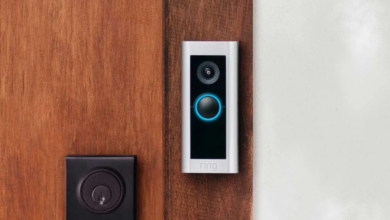
The next generation of EV charging is poised to revolutionize electric mobility, offering faster, smarter, and more sustainable solutions to meet growing demand. As electric vehicles (EVs) become mainstream, advancements in charging technology are eliminating key barriers like long wait times, limited infrastructure, and grid strain. From ultra-fast chargers to wireless power transfer and vehicle-to-grid (V2G) systems, the future of EV charging promises unprecedented convenience, efficiency, and integration with renewable energy sources.
The shift toward next-gen charging isn’t just about speed it’s about creating a seamless, interconnected ecosystem. Innovations like AI-powered smart charging, bidirectional energy flow, and solar-integrated stations are transforming EVs from mere vehicles into dynamic energy assets. As governments and private companies invest heavily in infrastructure, the next era of EV charging will make electric transportation more accessible, reliable, and eco-friendly than ever before.
What the Next Generation of EV Charging Looks Like
The Evolution of EV Charging Technology
The journey of EV charging has come a long way from slow, cumbersome plugs to high-speed, intelligent systems. Early charging solutions were limited in speed and availability, but advancements in battery technology and power delivery have revolutionized the industry. The next generation of EV charging is not just about reducing charging times but also about integrating renewable energy, enhancing grid stability, and improving user convenience.
Ultra-Fast Charging
One of the most significant breakthroughs in EV charging is the development of ultra-fast chargers capable of delivering 350 kW or more. These chargers can replenish an EV’s battery to 80% in just 15-20 minutes, making them comparable to the time it takes to refuel a gasoline car. Companies like Tesla, Electrify America, and Ionity are rapidly expanding networks of high-power charging stations, reducing range anxiety and making long-distance EV travel more practical. However, ultra-fast charging requires robust infrastructure, including high-voltage power lines and advanced cooling systems to prevent battery degradation. Researchers are also working on next-generation batteries, such as solid-state batteries, that can handle rapid charging without compromising longevity.
Wireless Charging
Imagine parking your car and having it charge automatically without plugging in a cable. Wireless charging, using inductive or resonant charging technology, is poised to make this a reality. Companies like WiTricity are developing systems where EVs charge simply by parking over a charging pad, eliminating the need for physical connectors. This technology is particularly promising for autonomous vehicles, which could self-park over charging pads without human intervention. While still in its early stages, wireless charging could soon become a standard feature in homes, parking lots, and even roadways, enabling dynamic charging while driving.
Bidirectional Charging
Bidirectional charging, or vehicle-to-grid (V2G) technology, allows EVs to not only draw power from the grid but also send electricity back. This innovation transforms EVs into mobile energy storage units that can stabilize the grid during peak demand, power homes during outages, or even sell excess energy back to utilities. Nissan’s Leaf and Ford’s F-150 Lightning already support bidirectional charging, and more automakers are expected to follow. This technology could play a crucial role in renewable energy adoption, as EVs can store solar or wind power and redistribute it when needed.
Smart Charging and AI Optimization
Artificial intelligence (AI) is revolutionizing EV charging by optimizing energy use based on grid demand, electricity prices, and driver habits. Smart charging systems can automatically schedule charging during off-peak hours, reducing costs and easing grid strain. Additionally, AI-powered charging networks can predict usage patterns, allocate power efficiently, and even diagnose charging issues remotely. Companies like ChargePoint and Enel X are leveraging AI to create more responsive and user-friendly charging experiences.
Renewable Energy Integration
The next generation of EV charging will increasingly rely on renewable energy sources like solar and wind. Solar-powered charging stations, combined with battery storage, can provide clean energy without relying on fossil fuels. Some companies are even testing solar car roofs that trickle-charge EVs while parked. By integrating renewables, EV charging can achieve true sustainability, reducing the carbon footprint of electric transportation even further.
Expanding Charging Infrastructure
Despite progress, charging infrastructure remains unevenly distributed, with urban areas having more stations than rural ones. Governments and private companies are investing heavily to expand charging networks, ensuring that EV owners have reliable access wherever they go. Initiatives like the U.S. National Electric Vehicle Infrastructure (NEVI) program aim to deploy 500,000 public chargers by 2030. Similarly, Europe and China are rapidly building ultra-fast charging corridors to support cross-country EV travel.
The Role of Battery Swapping
While not yet mainstream, battery swapping presents an intriguing alternative to traditional charging. Companies like NIO are piloting stations where drivers can exchange depleted batteries for fully charged ones in minutes. This approach eliminates long charging waits and could be particularly useful for fleets and commercial vehicles. However, challenges like standardization and high infrastructure costs must be addressed before battery swapping becomes widespread.
Challenges of the Next Generation of EV Charging
High Infrastructure Costs
Deploying ultra-fast charging stations, wireless charging pads, and bidirectional (V2G) systems requires massive investments. The installation of high-power chargers demands upgraded electrical grids, specialized cooling systems, and reinforced utility connections, making them expensive to implement at scale.
Grid Capacity
As EV adoption grows, the increased demand for high-speed charging could strain local power grids, especially during peak hours. Without smart load-balancing solutions, rapid charging hubs may lead to voltage fluctuations or even blackouts in some areas.
Standardization
Different automakers use varying charging connectors, power levels, and communication protocols. A lack of universal standards for ultra-fast charging, wireless charging, and V2G technology could slow down progress and frustrate consumers.
Battery Degradation from Fast Charging
While ultra-fast chargers reduce wait times, frequent use of high-power charging can accelerate battery wear. Manufacturers must develop more resilient battery chemistries (like solid-state batteries) to maintain longevity without compromising charging speed.
Limited Availability in Rural
Urban centers are seeing rapid charging infrastructure growth, but rural and remote regions still lack sufficient stations. Expanding reliable, high-speed charging networks to these areas remains a logistical and financial challenge.
Slow Adoption of Bidirectional (V2G) Charging
Despite its potential, V2G technology faces regulatory hurdles, utility company resistance, and consumer skepticism. Policies must evolve to incentivize energy companies and EV owners to participate in grid-balancing programs.
Wireless Charging Efficiency
Inductive charging systems currently suffer from energy loss during transmission and high installation costs. Improving efficiency while making the technology affordable for mass adoption remains a key hurdle.
Consumer Awareness
Many potential EV buyers remain hesitant due to misconceptions about charging speed, availability, and reliability. Better education and transparent infrastructure planning are needed to boost confidence in next-gen charging solutions.
Read More: The Battery Revolution: What’s Coming Next
Conclusion
The next generation of EV charging represents a transformative leap forward in sustainable transportation, addressing current limitations while unlocking new possibilities for energy efficiency and convenience. With ultra-fast charging, wireless technology, and smart grid integration, EV owners will experience unprecedented ease and speed, making electric vehicles more practical than ever. These advancements not only benefit drivers but also support broader renewable energy goals by optimizing power usage and reducing strain on electrical infrastructure.
As we move toward this electrified future, collaboration between automakers, governments, and energy providers will be crucial in scaling these innovations globally. The next generation of EV charging is more than just an upgrade it’s the foundation for a cleaner, smarter, and more connected transportation ecosystem. By embracing these cutting-edge solutions, we can accelerate the transition to sustainable mobility and pave the way for a zero-emission future.
FAQs
How fast will next-gen EV chargers be?
Next-generation ultra-fast chargers can deliver up to 350 kW, charging an EV to 80% in 15-20 minutes.
What is bidirectional charging?
Bidirectional charging allows EVs to send power back to the grid or a home, acting as mobile energy storage.
Will wireless charging replace plug-in stations?
Wireless charging is emerging as a convenient alternative, but plug-in stations will remain essential for high-speed charging.
How does AI improve EV charging?
AI optimizes charging schedules, reduces costs, and enhances grid efficiency by predicting demand and managing power distribution.
Are solar-powered charging stations viable?
Yes, solar-powered stations with battery storage provide sustainable energy, reducing reliance on fossil fuels.












One Comment